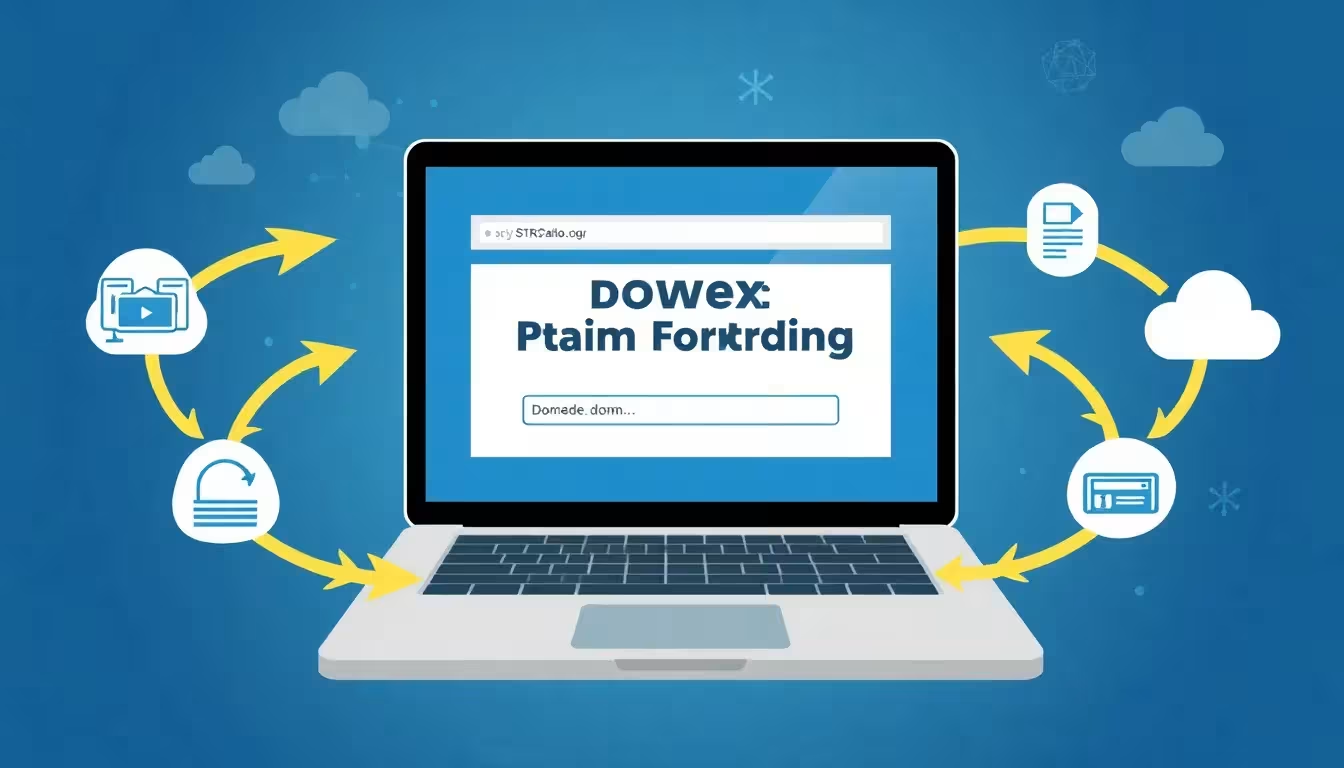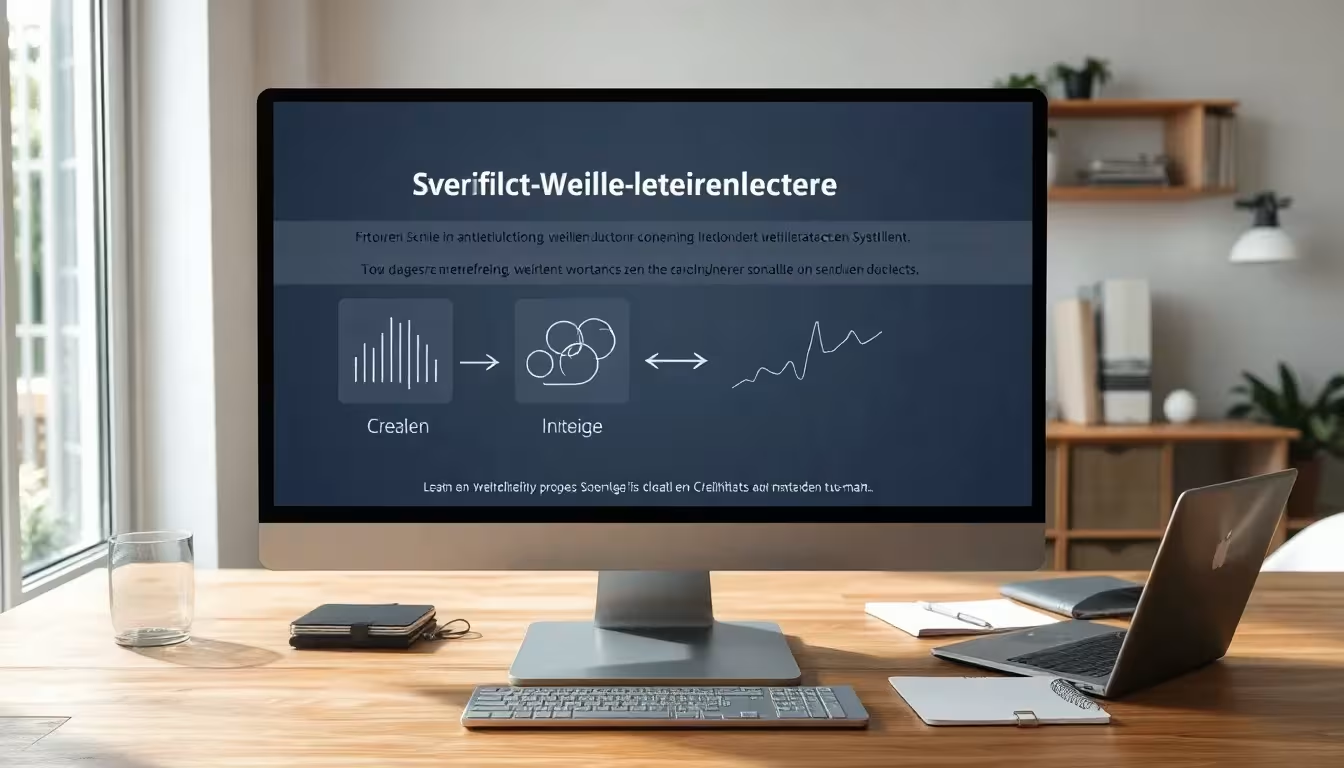Domain redirection at STRATO makes it possible to redirect domains to internal or external target addresses in a targeted and efficient manner. Various redirect types such as HTTP and frame redirects can be configured and optimized for SEO via the STRATO customer portal.
Key points
- HTTP forwarding displays the target URL and is optimal for SEO.
- Frame forwarding keeps the old URL visible - not very useful for search engines.
- 301 and 302 redirects can be precisely controlled via .htaccess.
- Subdomains can be forwarded flexibly or customized via DNS entry.
- Combined strategies avoid duplicate content and strengthen the page structure.

HTTP redirection: Ideal for SEO and user-friendliness
The HTTP forwarding is the recommended variant at STRATO when it comes to search engine friendliness. The advantage is that the target URL is visible in the address bar and search engines can track the redirect. The 301 variant is particularly suitable for permanent redirects. It signals to the crawler that content has been moved permanently. The 302 redirect, on the other hand, is temporary - it is suitable for short-term actions, such as seasonal landing pages.
Both forwarding types can be combined with a .htaccess-file in the root directory of the web space. The prerequisite is that the web server uses Apache and mod_rewrite is activated. This is already included in the STRATO package.
An example of a 301 redirect:
Redirect 301 / https://www.neue-domain.de/For more complex requirements, for example if only individual directories or specific files are to be redirected, regular expressions can be used in the .htaccess. An example would be redirecting all old blog articles to a new structure:
RewriteEngine On
RewriteRule ^blog/(.*)$ https://www.neue-domain.de/beitraege/$1 [R=301,L]Such approaches often preserve the ranking of individual content, as the path structure can be mapped on the new website. This means that Google notices relatively quickly that only the storage location has been changed. In this case, correct HTTP redirection is an important building block for maintaining user-friendliness and SEO strength.

Frame redirection: Simple option with SEO disadvantages
The Frame forwarding is still offered by STRATO, but is technically less useful. Here, the original domain address remains in the address bar of the browser, while the content of the target page is loaded via an HTML frame. From the point of view of search engines, this creates duplicate content, which can have a negative impact on the ranking.
One advantage is the quick setup without .htaccess: configuration is done directly in the STRATO customer portal at the click of a mouse. This can be useful if there are technical restrictions and a solution is needed at short notice - for microsites or event pages, for example.
Despite this simple structure, you should bear in mind that users are often confused if the URL does not change visually: The redirect type can reduce confidence in the accuracy of the content. The joint use of frame redirects and HTTP redirects can also unintentionally lead to collisions if the technical implementations overlap. It is therefore advisable to only use frame forwarding in exceptional cases.

Redirect and use subdomains correctly
STRATO offers the possibility, Subdomains can be forwarded specifically or used independently. For example, blog.your-domain.com can point to an external blogging system or a folder in the web space. This is possible via A-Record, CNAME or direct HTTP redirects.
A common method is forwarding using index files in the target folder. For example, if you create a index.html with forwarding code to a directory folder, each calling subdomain is automatically processed correctly. Advantageous for store areas or international language versions.
This structure can also be combined very well with modern web hosting offers from STRATO to efficiently manage multi-domain systems. The question often arises as to whether a separate subdomain offers SEO advantages depending on the content strategy. In principle, it makes sense to clearly separate content sections such as blogs or customer areas. However, if you are looking for strong uniformity, you may prefer subfolder-based structures (domain.de/blog/). The decision always depends on the individual project.
Advanced options: Wildcard subdomains and SSL
It can make sense to use wildcard subdomains, especially for extensive projects. A wildcard subdomain (for example *.your-domain.com) directs all sub-domain calls to a single location. This saves time and enables more flexible structures when many subdomains are in use, for example for landing pages, personalized areas or test environments.
However, you should ensure that you use a suitable SSL certificate for wildcard subdomains. For *.your-domain.com you need a wildcard SSL certificate so that all subdomains can be reached via HTTPS without having to reorder a separate certificate each time. This can be easily integrated with STRATO if the hosting package supports SSL.
Even within a .htaccess you can work with corresponding rewrite rules to route wildcard calls to different directories or scripts. For example, multilingual content can be split according to country codes or you can redirect cityname.your-domain.com to a specific directory in the web space that contains the appropriate website for this city.
However, if you do not wish to use mod_rewrite directly, you can also control all settings via a DNS entry and thus enable external applications to manage the subdomains. The flexibility is in the hands of the administrator - while STRATO's user interface also offers beginners an easy way to create and forward subdomains.

Technical implementation with DNS and A-Records
Advanced forwarding strategies often use DNS records. A and CNAME records can be edited via the STRATO customer portal. This allows you to assign domains directly to an IP address - particularly useful if external services (e.g. cloud systems or stores) are used.
If you want to direct a domain to a CDN provider or use it as a white label domain, for example, you can do this flexibly via the DNS control at STRATO. Changes usually take effect within a few hours.
| Entry type | Use | Example target |
|---|---|---|
| A-Record | Direct IP destination assignment | 192.0.2.0 |
| CNAME | Alias for other domains | web.example.com |
| MX | E-mail routing | mail.strato.de |
It is important to strategically adjust the TTL (Time to Live). If you change or test entries frequently, you should set a lower TTL so that changes take effect more quickly. On the other hand, a high TTL can be useful if the configuration is rather static and contains few changed entries - this reduces DNS queries and relieves the name server.

Domain forwarding with forwarding code in index files
A practical approach is forwarding by inserting a code into the index.html or index.php. These files are normally the start page of a directory. With just a few lines of code, you can automatically point the domain to another redirect address.
A typical example code in HTML could look like this:
This is well suited for static hosting packages where no .htaccess can be used. However, it is not ideal for SEO purposes, as search engines interpret this signal less clearly. However, in combination with dedicated subdomains, this method can be quite useful.
Such a meta refresh solution is also a good idea for smaller projects that only require a short-term redirect. For example, for event pages that are only active seasonally, the index file of the old domain can provide a reference and at the same time redirect to the more current domain. This also makes it clear to visitors where they should go and there is no need for complex server configuration.

Which forwarding makes sense and when?
Whether HTTP, Frame or DNS - each method fulfills different purposes. For permanent redirects with SEO relevance, I only use 301 redirects via .htaccess. For short-term tests, I use 302. I only use frame redirects for internal previews or for static content without SEO requirements.
Technically savvy users also benefit from the DNS setting for external tools or microservices. With several language versions, structural problems can also be quickly resolved using targeted forwarding logic. STRATO offers an easy-to-understand user interface with sufficient documentation. When choosing the right redirect, it is important to be clear about the target structure, content strategy and user behavior beforehand.
For example, anyone who wants to completely transfer an old domain to a new domain benefits enormously from the fact that 301 redirects transfer the "link juice" and thus largely maintain the search engine ranking. Such transfers often occur during rebranding processes or mergers of projects. Precise planning of the redirect structure can ensure that visitors do not end up on dead pages and that all relevant content is found.
Avoid common mistakes
Domain redirects harbor several sources of error. A common error is a missing or incorrect .htaccess-file. Duplicate redirect chains also lead to poor loading times and loss of ranking. I always make sure that no loops are created and that the target page is actually accessible.
Unwanted forwarding patterns due to wildly set CNAME entries or incorrectly configured subfolders can also cause problems. If you use STRATO, you should regularly test which domains are being redirected and how. Tools such as httpsstatus or redirect-checker offer quick tests for this.
A forwarding plan on paper or as a table can help to maintain an overview - especially for larger projects. It is also advisable to carry out thorough tests after every change in the STRATO customer portal. Due to the high potential of different forwarding scenarios (HTTP, frame, DNS, .htaccess, meta refresh), a confusing construct quickly arises if changes are made in an uncoordinated manner.
It is also advantageous to SSL certificates not to forget. Especially if parts of a domain are based on HTTPS and other parts are forwarded unencrypted, this can lead to security warnings in the browser. Uniform SSL standards and consistent redirects to https pages contribute to a trustworthy user experience and protect the page from "mixed content" errors.

Summarized: Flexible forwarding with STRATO
STRATO offers a fully equipped system for Domain forwardingwhich is suitable for both technical laymen and web developers. The selection of forwarding types covers almost all use cases. From HTTP to Frame to DNS, everything can be customized. If you set up your domains strategically and redirect them sensibly, you not only increase SEO and visibility, but also improve the user experience.
Finally, it is also worth considering the email component: If you set up forwarding for a domain, you should also check how the forwarding affects the associated mailboxes. STRATO explains this in more detail in the Webmail guide with configuration instructions. A carefully planned move and the skillful setup of redirects save time, money and nerves - especially when several projects or complex website structures are connected.
In the long term, a properly implemented redirect also leads to stable SEO performance because the domain authority is maintained and users can access the content without interruption. By taking all these points into account and effectively using the tools offered in the STRATO customer portal, successful domain strategies can be implemented for almost any project size.



